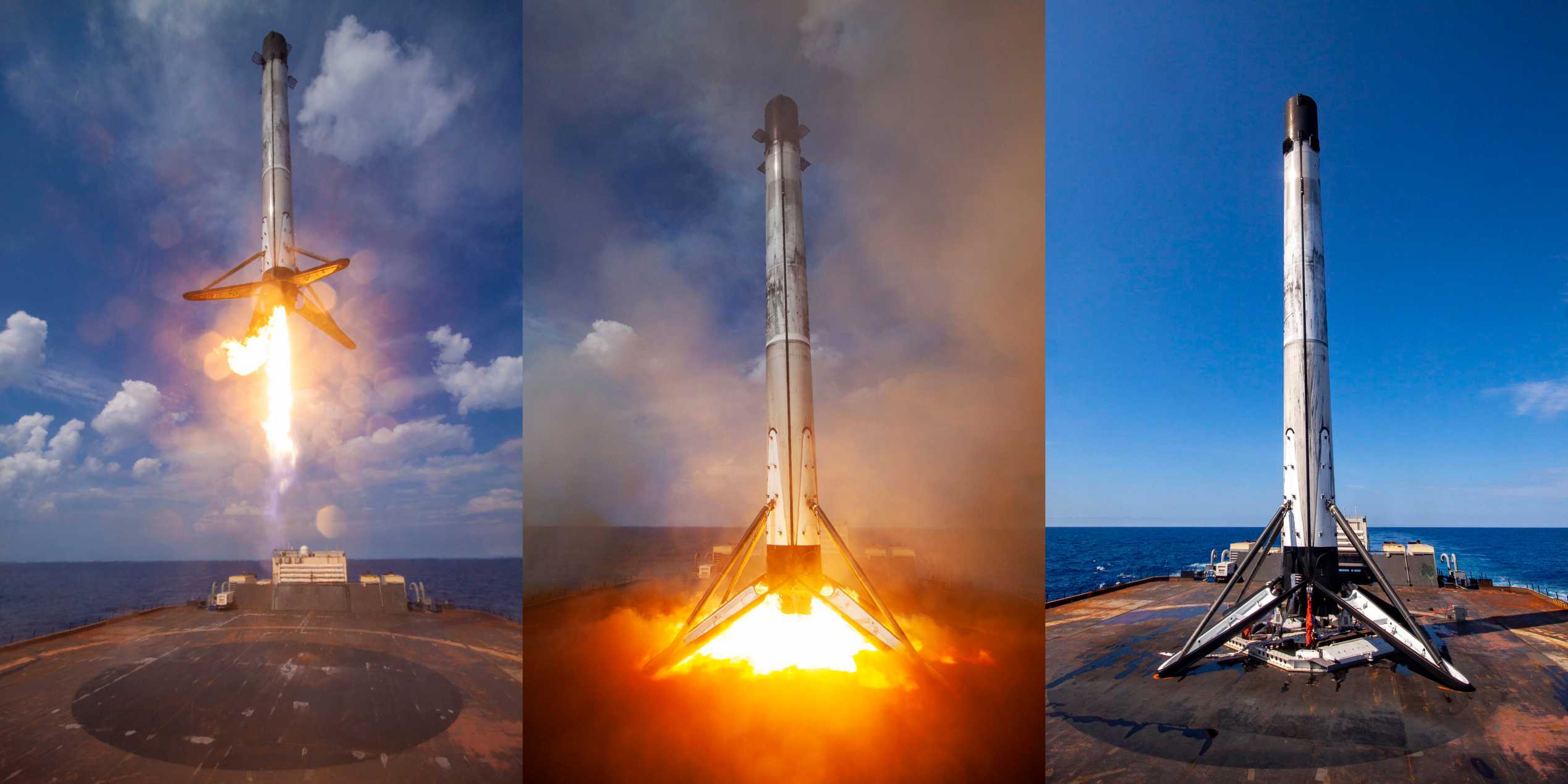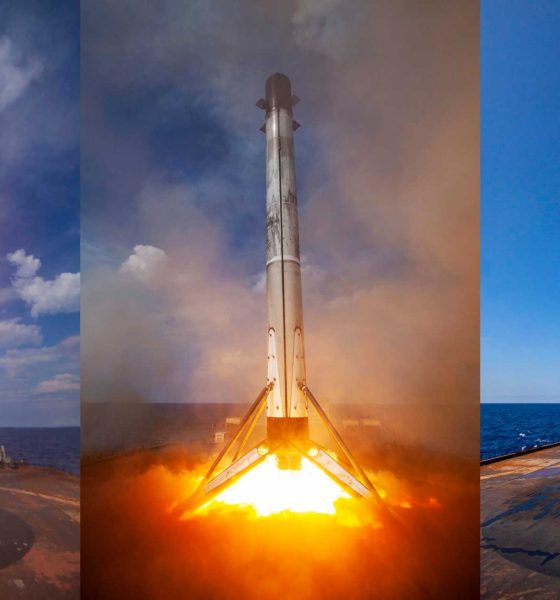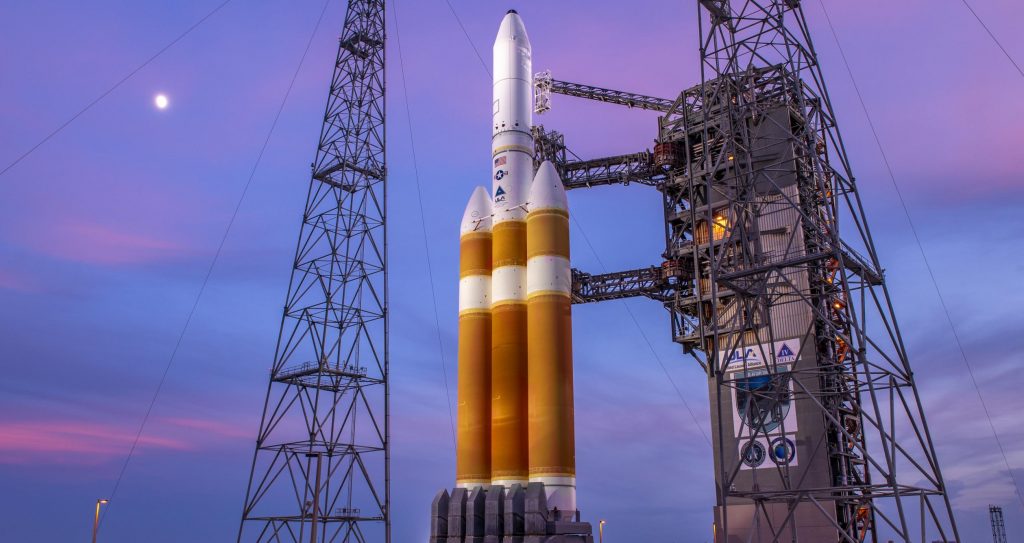

News
SpaceX adds third Starlink launch to busy October manifest
SpaceX has added another Starlink launch to its October manifest and plans to support the mission with a record-breaking Falcon 9 booster turnaround.
Several media outlets recently confirmed that SpaceX will attempt to launch Starlink-13 – the 13th launch of operational v1.0 satellites and 14th launch overall – no earlier than (NET) 8:25 am EDT (12:25 UTC) on October 18th. Two days later, NASASpaceflight.com reports that SpaceX intends to launch Starlink-14 as few as three days later, aiming to lift off NET 12:36 pm EDT (16:36 UTC) on Wednesday, October 21st.
Simultaneously, a United Launch Alliance (ULA) Delta IV Heavy rocket’s eighth attempt to launch the National Reconnaissance Office’s NROL-44 spy satellite is scheduled NET 10 pm EDT (02:00 UTC), October 23rd. As a result, barring a (lately) rare instance of two back-to-back on-time launches, SpaceX and ULA appear to be destined to butt heads again on Florida’s Cape Canaveral launch range.
Originally scheduled to launch as early as June 2020, Delta IV Heavy’s NROL-44 launch slipped to August, ultimately landing on August 26nd. Thus began a bizarre series of delays. Pad pressurization systems were to blame for the first delay on August 27th, followed by a rare post-ignition launch abort on August 29th. For Delta IV Heavy, such an abort necessitates at least several weeks of rework and the next NROL-44 launch attempt came on September 26th, only to be aborted by issues with the pad’s umbilical “swing arm”. Weather scrubbed another attempt on September 28th, while the subsequent September 29th backup was aborted by a leak in a pad hydraulic system. Last but certainly not least, Delta IV Heavy suffered yet another last-second abort at T-7 seconds on September 30th.
All the while, ULA’s NROL-44 mission took range priority, meaning that the US Air Force wing responsible for enforcing range safety and providing weather forecasts would delay all other missions until the ULA launch was either completed or substantially delayed. Combined with temperamental weather, ULA’s range priority contributed to several SpaceX Starlink and GPS III SV04 launch delays in September and early October. Now, unless SpaceX manages to launch Starlink-13 and Starlink-14 right on schedule on October 18th and 21st, anything more than a day or two of delays will likely snowball into further delays as Delta IV Heavy takes the stage.


Regardless of the schedule uncertainty and potential for delays, if SpaceX manages to successfully launch Starlink-13 and Starlink-14 within the next two or so weeks, October will mark the first time the company has launched three Starlink missions in one month. If the missions weren’t for Starlink, SpaceX would effectively be creating the second largest commercial satellite constellation in the world in less than 30 days.
Additionally, NextSpaceflight.com reports that SpaceX has assigned Falcon 9 booster B1060 to Starlink-14. If Starlink-14 lifts off on schedule on October 21st, B1060 will beat out B1058 for the crown of fastest booster turnaround, launching twice in just 48 days. Falcon 9 B1058 set the current world record when it beat NASA’s Space Shuttle (54 days) with a 51-day turnaround earlier this year.
Tune in to SpaceX’s official webcast below around 8:10 am EDT (12:10 UTC) to catch the Starlink-13 launch and landing live.
Check out Teslarati’s Marketplace! We offer Tesla accessories, including for the Tesla Cybertruck and Tesla Model 3.

Elon Musk
Elon Musk and Tesla AI Director share insights after empty driver seat Robotaxi rides
The executives’ unoccupied tests hint at the rapid progress of Tesla’s unsupervised Robotaxi efforts.

Tesla CEO Elon Musk and AI Director Ashok Elluswamy celebrated Christmas Eve by sharing personal experiences with Robotaxi vehicles that had no safety monitor or occupant in the driver’s seat. Musk described the system’s “perfect driving” around Austin, while Elluswamy posted video from the back seat, calling it “an amazing experience.”
The executives’ unoccupied tests hint at the rapid progress of Tesla’s unsupervised Robotaxi efforts.
Elon and Ashok’s firsthand Robotaxi insights
Prior to Musk and the Tesla AI Director’s posts, sightings of unmanned Teslas navigating public roads were widely shared on social media. One such vehicle was spotted in Austin, Texas, which Elon Musk acknowleged by stating that “Testing is underway with no occupants in the car.”
Based on his Christmas Eve post, Musk seemed to have tested an unmanned Tesla himself. “A Tesla with no safety monitor in the car and me sitting in the passenger seat took me all around Austin on Sunday with perfect driving,” Musk wrote in his post.
Elluswamy responded with a 2-minute video showing himself in the rear of an unmanned Tesla. The video featured the vehicle’s empty front seats, as well as its smooth handling through real-world traffic. He captioned his video with the words, “It’s an amazing experience!”
Towards Unsupervised operations
During an xAI Hackathon earlier this month, Elon Musk mentioned that Tesla owed be removing Safety Monitors from its Robotaxis in Austin in just three weeks. “Unsupervised is pretty much solved at this point. So there will be Tesla Robotaxis operating in Austin with no one in them. Not even anyone in the passenger seat in about three weeks,” he said. Musk echoed similar estimates at the 2025 Annual Shareholder Meeting and the Q3 2025 earnings call.
Considering the insights that were posted Musk and Elluswamy, it does appear that Tesla is working hard towards operating its Robotaxis with no safety monitors. This is quite impressive considering that the service was launched just earlier this year.
Elon Musk
Starlink passes 9 million active customers just weeks after hitting 8 million
The milestone highlights the accelerating growth of Starlink, which has now been adding over 20,000 new users per day.

SpaceX’s Starlink satellite internet service has continued its rapid global expansion, surpassing 9 million active customers just weeks after crossing the 8 million mark.
The milestone highlights the accelerating growth of Starlink, which has now been adding over 20,000 new users per day.
9 million customers
In a post on X, SpaceX stated that Starlink now serves over 9 million active users across 155 countries, territories, and markets. The company reached 8 million customers in early November, meaning it added roughly 1 million subscribers in under seven weeks, or about 21,275 new users on average per day.
“Starlink is connecting more than 9M active customers with high-speed internet across 155 countries, territories, and many other markets,” Starlink wrote in a post on its official X account. SpaceX President Gwynne Shotwell also celebrated the milestone on X. “A huge thank you to all of our customers and congrats to the Starlink team for such an incredible product,” she wrote.
That growth rate reflects both rising demand for broadband in underserved regions and Starlink’s expanding satellite constellation, which now includes more than 9,000 low-Earth-orbit satellites designed to deliver high-speed, low-latency internet worldwide.
Starlink’s momentum
Starlink’s momentum has been building up. SpaceX reported 4.6 million Starlink customers in December 2024, followed by 7 million by August 2025, and 8 million customers in November. Independent data also suggests Starlink usage is rising sharply, with Cloudflare reporting that global web traffic from Starlink users more than doubled in 2025, as noted in an Insider report.
Starlink’s momentum is increasingly tied to SpaceX’s broader financial outlook. Elon Musk has said the satellite network is “by far” the company’s largest revenue driver, and reports suggest SpaceX may be positioning itself for an initial public offering as soon as next year, with valuations estimated as high as $1.5 trillion. Musk has also suggested in the past that Starlink could have its own IPO in the future.
News
NVIDIA Director of Robotics: Tesla FSD v14 is the first AI to pass the “Physical Turing Test”
After testing FSD v14, Fan stated that his experience with FSD felt magical at first, but it soon started to feel like a routine.

NVIDIA Director of Robotics Jim Fan has praised Tesla’s Full Self-Driving (Supervised) v14 as the first AI to pass what he described as a “Physical Turing Test.”
After testing FSD v14, Fan stated that his experience with FSD felt magical at first, but it soon started to feel like a routine. And just like smartphones today, removing it now would “actively hurt.”
Jim Fan’s hands-on FSD v14 impressions
Fan, a leading researcher in embodied AI who is currently solving Physical AI at NVIDIA and spearheading the company’s Project GR00T initiative, noted that he actually was late to the Tesla game. He was, however, one of the first to try out FSD v14.
“I was very late to own a Tesla but among the earliest to try out FSD v14. It’s perhaps the first time I experience an AI that passes the Physical Turing Test: after a long day at work, you press a button, lay back, and couldn’t tell if a neural net or a human drove you home,” Fan wrote in a post on X.
Fan added: “Despite knowing exactly how robot learning works, I still find it magical watching the steering wheel turn by itself. First it feels surreal, next it becomes routine. Then, like the smartphone, taking it away actively hurts. This is how humanity gets rewired and glued to god-like technologies.”
The Physical Turing Test
The original Turing Test was conceived by Alan Turing in 1950, and it was aimed at determining if a machine could exhibit behavior that is equivalent to or indistinguishable from a human. By focusing on text-based conversations, the original Turing Test set a high bar for natural language processing and machine learning.
This test has been passed by today’s large language models. However, the capability to converse in a humanlike manner is a completely different challenge from performing real-world problem-solving or physical interactions. Thus, Fan introduced the Physical Turing Test, which challenges AI systems to demonstrate intelligence through physical actions.
Based on Fan’s comments, Tesla has demonstrated these intelligent physical actions with FSD v14. Elon Musk agreed with the NVIDIA executive, stating in a post on X that with FSD v14, “you can sense the sentience maturing.” Musk also praised Tesla AI, calling it the best “real-world AI” today.








